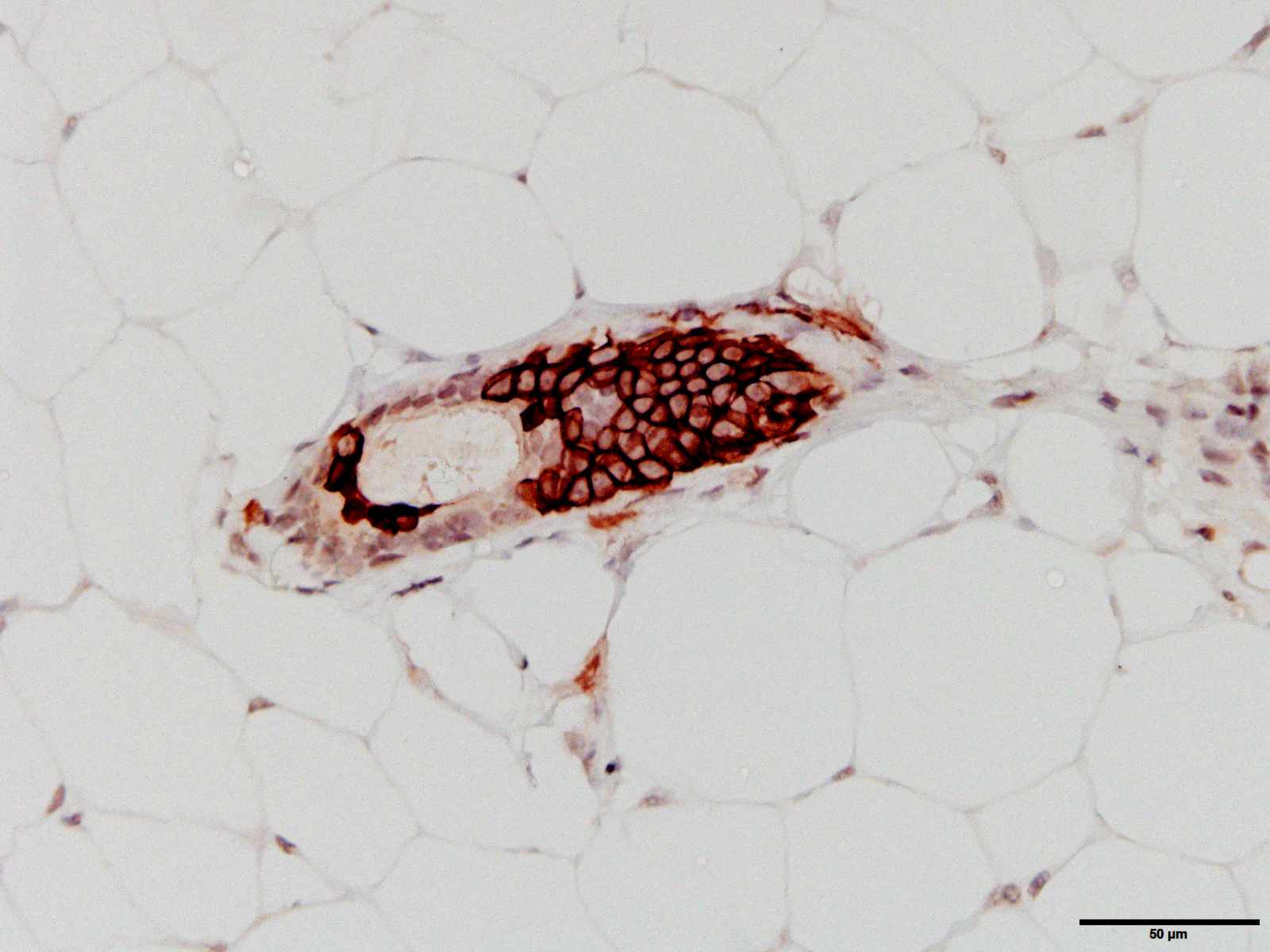Breast Cancer
Ruxolitinib for the Prevention of Breast Cancer



Posted January 5, 2021
Yi Li, Ph.D., Baylor College of Medicine

Dr. Yi Li
An estimated 10% of breast biopsies result in a diagnosis of atypical ductal hyperplasia (ADH) or atypical lobular hyperplasia (ALH) annually in the United States. Because these benign breast lesions carry a 30% chance of developing into breast cancer within 25 years of diagnosis, women diagnosed with ADH or ALH often undergo preventative treatment including a five-year course of antiestrogen therapy. The side effects associated with these antiestrogens coupled with the duration of the therapy lead many women to forego this therapy, and many that do choose treatment discontinue their therapy prematurely. Therefore, a new preventative treatment that would be more widely accepted by high-risk women who have been diagnosed with benign breast lesions is urgently needed. Over the course of two decades, with the support of Breast Cancer Research Program (BCRP) funding, Dr. Li has identified both a key cellular mechanism that potentially controls whether an atypical hyperplasia develops into breast cancer and a potential pharmacological inhibitor that may prevent progression to invasive disease.
In Fiscal Year 1998 (FY98), Dr. Li received a BCRP Postdoctoral Traineeship Award in order to develop a viral gene transfer system that allowed his team to dissect the genetic pathways involved in breast tumor development. Then, with support from an FY03 BCRP Idea Award, Dr. Li used this viral gene transfer technology to develop a novel breast cancer mouse model that recapitulated the natural progression of human disease. The mouse model allowed him to target oncogenes to specific mammary cells and examine their function in promoting tumorigenesis. In FY07, Dr. Li obtained a second BCRP Idea Award and showed that activation of signal transducer and activator of transcription 5 (STAT5) in the Janus kinase 2 (JAK2)/STAT5 pathway was essential for the progression of atypical hyperplasia to breast tumor formation. Using his viral gene transfer system and mouse model, Dr. Li found that the mammary epithelial cells that activated STAT5 had lower levels of apoptosis.
With an FY11 BCRP Idea Expansion Award, Dr. Li demonstrated that STAT5 could be activated in mammary epithelial cells that suffered oncogenic mutations leading to triple-negative and human epidermal growth factor receptor 2 (HER2) positive breast cancers. In Dr. Li’s mouse models, genetic and pharmacological inhibition of STAT5 was shown to restore the apoptosis barrier and inhibit expansion of early precancerous lesions and thus the progression to cancer. To determine whether inhibition of JAK2 upstream of STAT5 in the JAK2/STAT5 pathway would result in a similar effect, a short prophylactic course of the FDA-approved JAK1/2 inhibitor ruxolitinib was administered to mice harboring STAT5 early lesions. Ruxolitinib not only suppressed expression of activated STAT5 in the early lesions, it induced apoptosis and caused early lesions to regress.
The strong preclinical mouse studies performed by Dr. Li with BCRP support convinced the pharmacological company that makes ruxolitinib, Incyte, to support a multi-center window-of-opportunity clinical trial examining whether prophylactic treatment with ruxolitinib inhibits activation of STAT5 in precancerous lesions of women diagnosed with ductal carcinoma in situ (DCIS), ALH, ADH, or lobular carcinoma in situ (Translational Breast Cancer Research Consortium [TBCRC 042]; NCT02928978). Women enrolled in the trial will be randomized to receive either ruxolitinib or placebo, which will be taken twice daily for 15 days. Correlative studies will examine apoptosis of premalignant breast cells at diagnosis compared to post-treatment. In addition, the clinical trial team will examine changes in activated STAT5 levels pre- and post-treatment.
Dr. Li’s discovery continues with an FY19 BCRP Breakthrough Award – Level 2 – Population Science and Prevention Study. He will collaborate with Dr. Julie Nangia, the clinician leading TBCRC 042, to determine the impact of ruxolitinib on ADH using patient samples obtained from this clinical trial. Additionally, Dr. Li aims to use mouse models of human ADH to determine whether administration of ruxolitinib can restore the apoptosis anti-cancer barrier and prevent progression to breast cancer.
With 50,000 women diagnosed with DCIS and 100,000 with atypical hyperplasia annually in the United States, results from Dr. Li’s work and this clinical trial could have a transformative impact for women diagnosed with benign breast lesions that are high risk for developing into breast cancer. If successful, results from TBCRC 042 will provide the initial evidence needed to support the clinical use of ruxolitinib treatment as a breast cancer prevention strategy.

Human ADH cells grown in mice as highlighted by a human cell specific marker Cytokeratin 19
Links:
Public and Technical Abstracts: Ruxolitinib in Preventing Human ADH Progression to Cancer
Public and Technical Abstracts: STAT5 as a Molecular Target for Breast Cancer Prevention
Public and Technical Abstracts: Mammary-Specific Gene Transfer for Modeling Breast Cancer
Last updated Friday, December 13, 2024














